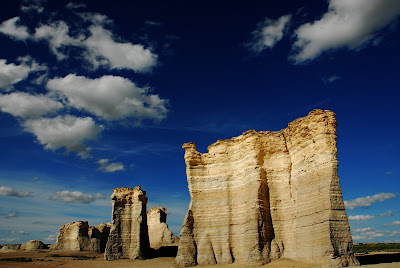The Power of B & W
I've wanted to get a good picture of Long's Peak, one of Colorado's 8 or 9 most difficult peaks, ever since I climbed it four years ago, but I never found a view that showed its real grandeur among the rest of the Rockies, until Susan and I and Addy and Julie hiked to a lookout spot in Garden Gate Canyon State Park a bit south of Boulder in the Front Range. Below is what I got on my first attempt. Below that, from a slightly different spot, is the Photoshopped view (think Ansel Adams!).



 This is a wide-angle shot, by the way, with my zoom lens set at 18 mm, giving the sky that "Kansas Bowl" look which characterizes the Great Plains.
This is a wide-angle shot, by the way, with my zoom lens set at 18 mm, giving the sky that "Kansas Bowl" look which characterizes the Great Plains.




